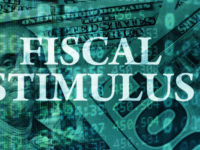For the first time since October 2009, Tasmania has been ranked the best-performing state in Australia in its own right, according to Commonwealth Securities’ quarterly State of States report.
Three months ago Tasmania shared top spot with Victoria, which is in now second place and risks a further decline in coming months as a result of the effects of the COVID-19 outbreak in the state.
The ACT remains in third spot and NSW in fourth, but both these economies have lost ground to the top two jurisdictions.
They are followed by Queensland in fifth place, then South Australia, Western Australia and the Northern Territory.
Every three months, CommSec economists Craig James and Ryan Felsman compare the performance of each state and territory through eight key economic indicators.
These are economic growth, retail spending, equipment investment, unemployment, construction work, population growth, housing finance and dwelling commencements.
Over the quarter, Tasmania gained ground in equipment investment and retail trade, although eased on both housing finance and dwelling starts.
The Victorian economy was relatively stable across all eight indicators prior to the COVID-19 lockdown in parts of Melbourne.
The ACT, which has ranked in the top four economies in the past four years, reported some weakening in equipment investment and unemployment in the quarter.
While the ACT jobless rate was 5.1 per cent in June compared with 6.9 per cent in Tasmania, the latter’s rate is 7.4 per cent above its decade average.
However, the ACT is 29.4 per cent above its average and why the island state ranks above the nation’s capital on unemployment, the report explains.
NSW also lost ground on unemployment, economic growth, dwelling starts and retail trade.
While Queensland eased in term of economic growth, it rose on improved unemployment, equipment investment and retail trade.
Meanwhile, SA eased on equipment investment, construction work and unemployment.
During the quarter, WA improved on economic growth, population growth and equipment investment, while NT saw an improvement in unemployment, but eased on equipment investment.
This story first appeared on our sister publication Inside Retail














